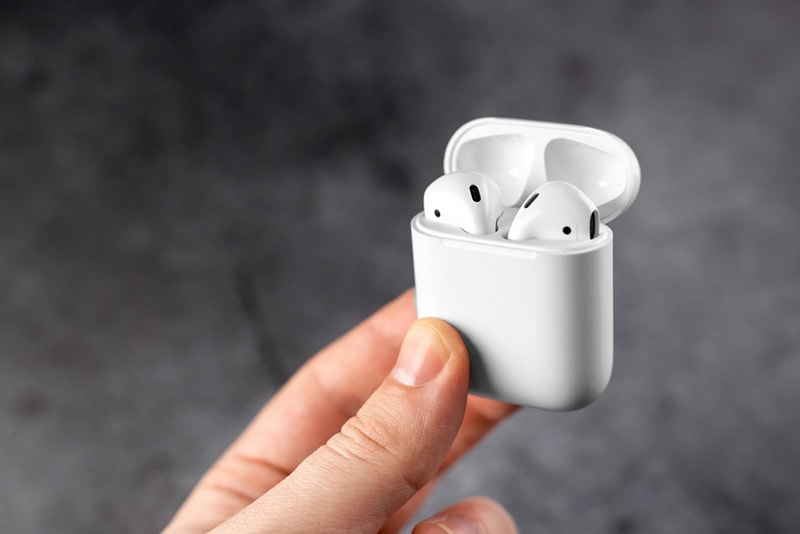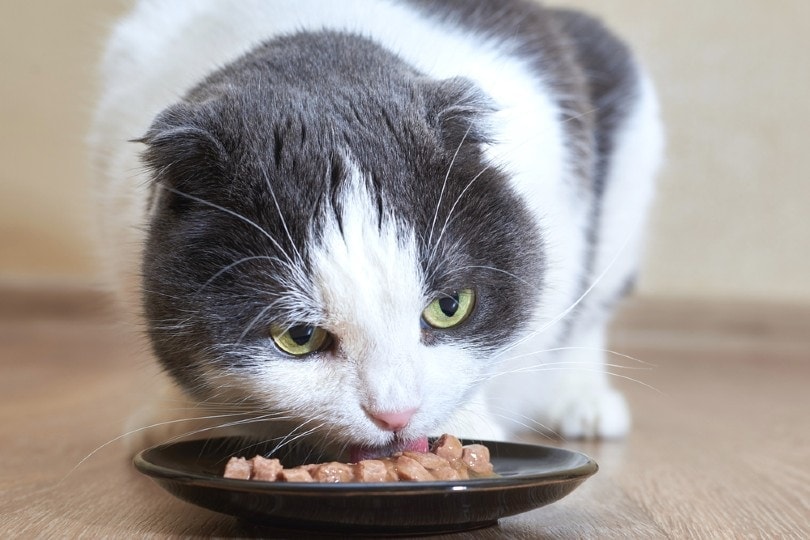My Dog Ate a Maxi-Pad: What You Need to Do (Vet Answer)
By Dr. Paola Cuevas, MVZ (Vet)
Updated on
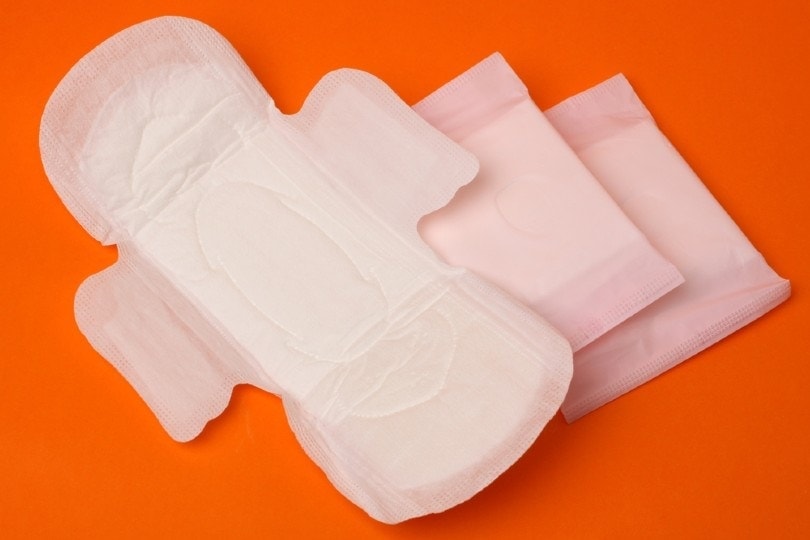
Maxi-pads differ in their composition materials, but the average sanitary napkin is made of bleached rayon, cotton, plastics, and adhesives. The menstrual discharge is what makes Maxi-pads attractive to dogs. It is not uncommon for dogs to go scavenging into kitchen trash cans attracted by the food’s leftover smells. Similarly, dogs are attracted to organic waste (urine, feces, or blood) inside a toilet’s trashcan.
Believe it or not, this is a fairly common problem, your dog is definitively not the first nor will be the last dog on this planet that has ingested a Maxi-pad.
The 5 Steps to Follow if Your Dog Eats a Sanitary Pad
1. Observe Your Dog’s Behaviour
Unfortunately, a visit to your veterinary clinic is almost certain. But first, observe your dog closely, evaluate if he is breathing normally, and look for any obvious signs like vomiting or vomit reflex, diarrhea, lack of appetite, lethargy, or any other abnormal behavior. If the dog is not breathing normally or if you can see he is trying to vomit but is unable; or, on the other hand, is vomiting non-stop, salivating excessively, or has seizures, please take the dog to the veterinary clinic immediately. If your dog’s behavior is normal, proceed to the “crime scene”.
2. Clear The “Crime Scene”
Remove any leftover trash mess and make sure your dog has no access to it again. This will allow you to have a more detailed evaluation of the incident. Take note of all possible details, like whether your dog ate a whole Maxi-pad or part of one, and hopefully not two or more. Having as detailed information as possible will increase the chances of a successful resolution.
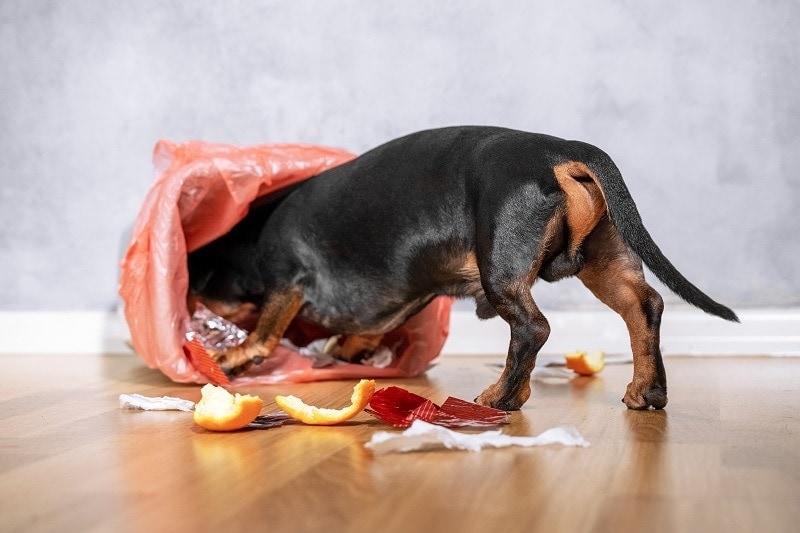
3. Note All Relevant Information
This should include:
- At what time did the dog eat the Maxi-pad? Keep in mind that, the chances of giving this issue an easier, cheaper, and less risky resolution are higher if the foreign objects in this case the Maxi-pad are removed sooner rather than later.
- Product specifications: There is a great variety of Maxi-pad sizes and compositions in the market, some nocturnal Maxi pads are 2x larger than a regular one and might also contain a larger amount of absorbent polymers. If you have a similar pad for exact measurements and a package containing the chemicals ingredients, this will provide your veterinarian with valuable information, bring it with you.
4. Evaluate The Size of Your Dog to The Size of The Ingested Pad
One of the biggest concerns of ingested Maxi-pads is that the absorbent polymers will get moistened with the gastric juices and expand inside your dog’s stomach after the ingestion. For this reason, there is a potential risk of a Maxi-pad getting stuck in your dog’s esophagus while attempting to vomit.
WARNING! It is not recommended to induce vomiting without a veterinarian’s supervision. If your dog is a larger breed and ate a small Maxi-pad, chances are that the Maxi-pad will be vomited without an issue; however, the same product could be very dangerous to a miniature dog.
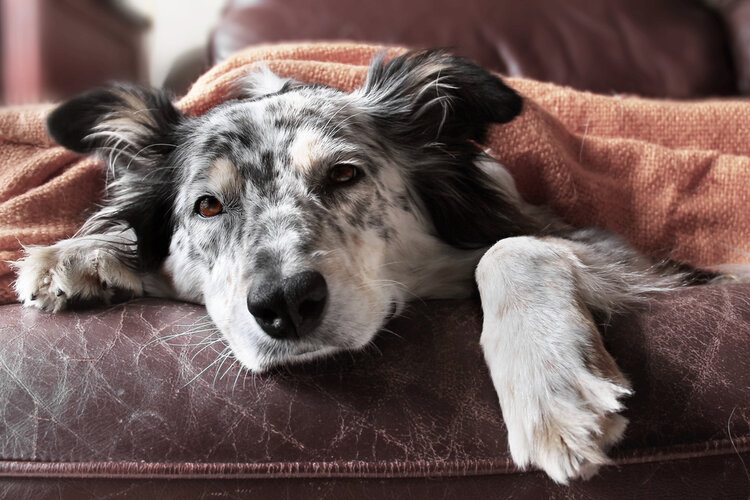
5. Stay Calm And Contact Your Vet
Continue observing your dog on the way to the clinic.
Will My Dog Be OK After Eating a Pad?
Due to the wide variety in the sizes and composition of Maxi pads, and the diversity of dog sizes; the management of this incident will be diverse and case-specific. Although there are several reports of large breed dogs vomiting or passing Maxi pads naturally in their feces, the risk is just not worth taking.
Another potential danger of Maxi-pad ingestion is that the chemicals can be toxic to your dog. It is recommended to call your veterinarian and provide him or her with all relevant information, clearly follow instructions, and bring your dog for consultation.
Potential Dangers of an Eaten Pad
Most of the materials forming the Maxi-pads are indigestible and if this material reaches the intestines, there is a real risk of intestinal blockage or obstruction, infection due to abnormal bacterial build-up, intestinal necrosis, intestinal perforation leading to peritonitis (a very dangerous abdominal infection), or other complications. Even if your dog looks normal today, this may change in the following days. For this reason, it is strongly recommended to visit your veterinarian as soon as possible even when the dog seems fine.
For some people, the Maxi-pad ingestion incident might be considered a bit of a taboo; as we explained earlier, Maxi-pad ingestion is fairly common in dogs so chances are your veterinarian has dealt with a similar case in the past. Please leave shyness aside and consider it very important to be honest with your veterinarian, and provide as much of the information you have collected to help your veterinarian treat your dog accordingly. Both your dog and your veterinarian will benefit from knowing the facts as detailed as possible.
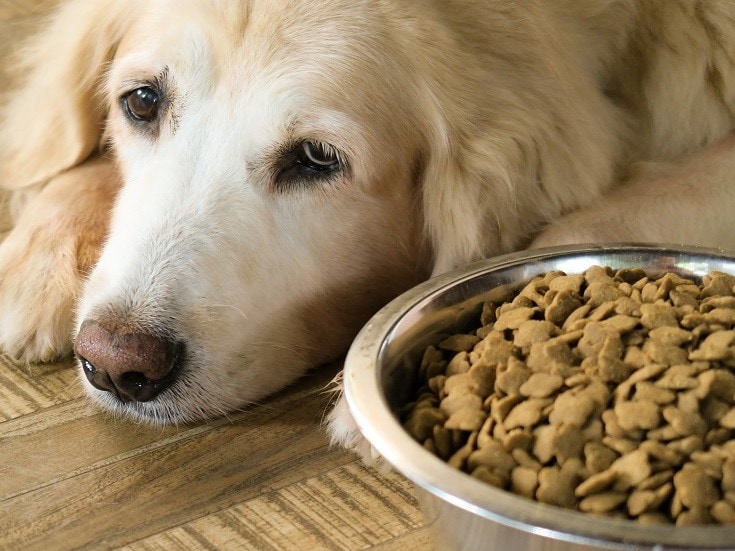
Once at the Veterinary Clinic: Diagnosis, Treatment & Procedures
Diagnosis
Your veterinarian will evaluate the specific case. If the Maxi-pad was small in comparison to the dogs’ size, and the incident happened less than three or four hours ago the solution could be as simple as giving your dog an injection that will make him vomit the Maxi-pad out.
If the Maxi-pad is bigger and the dog is a medium to small size, the veterinarian will most likely need to use some diagnostic imaging of the abdominal area to evaluate the size and location. This will involve X-rays and/or abdominal ultrasounds. Maxi-pads are not always easy to see with X-rays or ultrasound, but an abnormal pattern might give the Veterinarian a clue to the location of the ingested Maxi-pad.
Based on the information you provide, the patient evaluation, and the observation of an abnormal pattern, the veterinarian will then decide if it is safe to induce vomit with an injection, or if he needs to perform a gastroscopy. During a gastroscopy, the veterinarian uses a special machine that looks like a large flexible tube equipped with a small camera. The veterinarian will be able to clearly see and remove any content in the dog’s esophagus or stomach with the use of specialized tools that work with the gastroscope.
Treatment & Procedures
Gastroscopy
The gastroscopy is performed under general anesthesia. The tube is inserted through the dog’s mouth passing the esophagus until it reaches all the way to the stomach. Although a gastroscopy is considered an invasive medical procedure it has the advantage of being safe and quick. There is no incision done during a gastroscopy so the recovery time is shorter and less complicated than in the case of surgery.
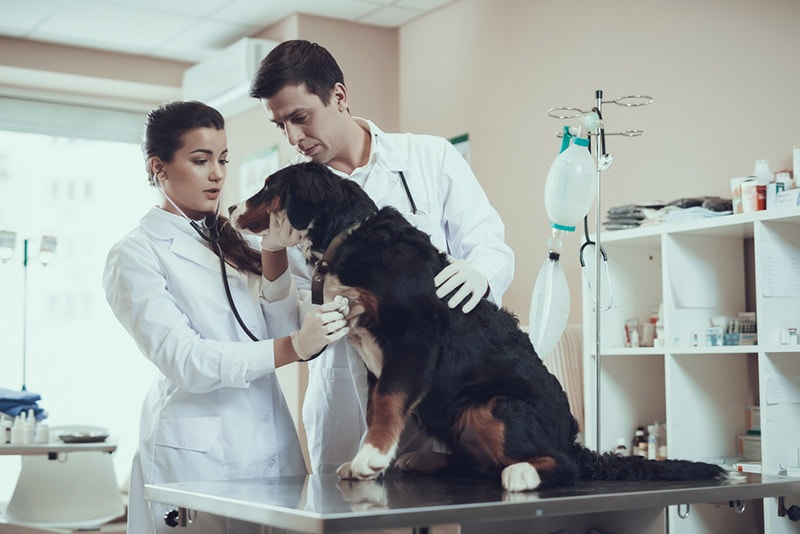
Contrast X-ray
After performing the X-rays or ultrasound, your veterinarian might discover that the Maxi-pad has already reached the intestines. Your veterinarian may want to do a contrast X-ray. In this case, your dog will be given a contrast medium; for example barium sulfate, orally. Your veterinarian will evaluate how the contrast medium advances through the intestinal tract, so a series of abdominal X-Rays will be performed to evaluate intestinal motility and discard any possible blockage of the intestine.
Other Options
Based on the recorded information, if there are no signs of intestinal blockage your veterinarian might decide to give your dog mineral oil orally to help the pad make its way through the intestinal tract. The mineral oil will work as a lubricant helping the Maxi-pad make its way through the intestines. He might also decide to give active charcoal to help absorb any toxins from the Maxi-pad’s chemical products.
If the veterinarian sees that the Maxi-pad is moving and there are no signs of complications they might send your dog back home and ask you to be observant of feces until the Maxi-pad is passed out. It will be very important for you to closely monitor your dogs’ behavior, appetite, and energy levels.
- Lethargy
- Lack of appetite
- Vomiting
- Diarrhea
- Swollen abdomen
- Fever
Other signs to be wary of are uncomfortable vocalization, trying to bite, or going away when you touch the abdominal area. Also, some dogs assume a position extending both front legs while sitting down.
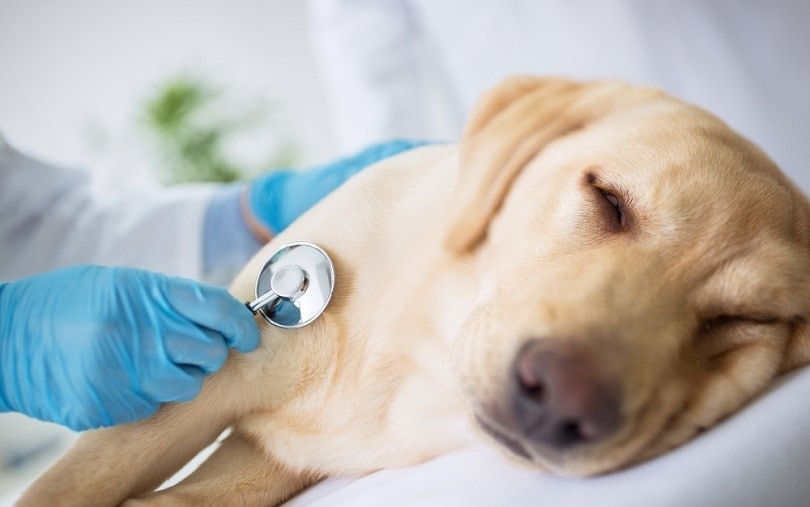
Will My Dog Have to Stay at the Clinic Overnight?
Your dog might need to spend a day in the clinic to receive intravenous fluids, pain management medicines, and be closely monitored while waiting for the Maxi-pad to be passed with the feces. The vet might also wish to perform follow-up X-rays and/or ultrasound studies and collect a blood sample to ensure everything is normal. The doctor might keep your dog for observation until the Maxi-pad is passed out with feces.
On the other hand, if the follow-up studies show any signs of inflammation, obstruction, infection, or other risks, it will be necessary to perform surgery. The surgery to remove the Maxi-pad from the dog’s intestines is performed under general anesthesia. This surgery is fairly common in dogs, however like any other open abdomen surgery it involves a higher risk and more complex post-operative care. If the intestines have been damaged your veterinarian might need to remove a portion of the dog’s intestine.
Time Matters…
As you can see the dog eating a Maxi-pad ingestion case can have an easy solution or get very complicated. The one thing to keep in mind is that pushing the veterinary visit in the hopes that the dog will vomit or pass out the Maxi-pad will only increase the chances of complications. The longer time passes between the ingestion incident and the consultation, the higher the risks due to the natural anatomy and physiology of the gastrointestinal tract. Waiting longer also increases the chances of the medical bill exponentially growing as more studies, procedures, and medicines will come into play. If you discover your dog ate a Maxi-pad keep calm, recover information, and visit your veterinarian as soon as possible.
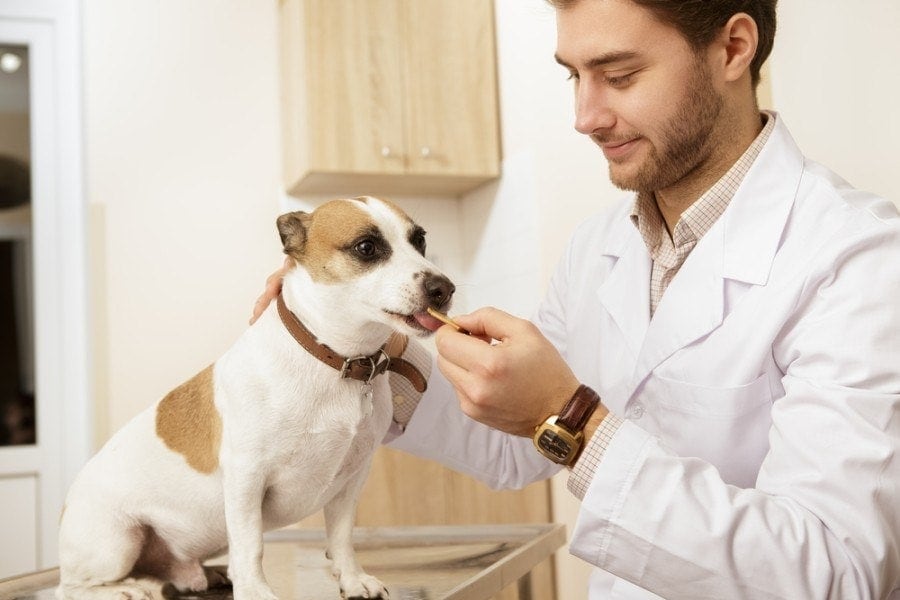
Final Thoughts
Dogs are instinctively attracted to the delicious mix of exotic smells expelled from your trash. One of the best practices when having a dog in the house is to have pet-safe trash bins. Pet-safe trash bins have heavy lids or covers that prevent your dog from having access to the trash. Dogs are natural scavengers. If your dog has a history of trash investigation, it is wise to consider investing in pet-proof bins to prevent veterinary emergency bills.
Keeping the kitchen’s trash bins inside the cupboards and developing the habit of closing the toilet doors will further prevent your dog from accessing the trash. Prevention is always better than regrets. Keep your dog safe, understand their instincts, and work around them to avoid any risky trash ingestion incidents in the future.
Featured Image Credit: jiangdi, Shutterstock




